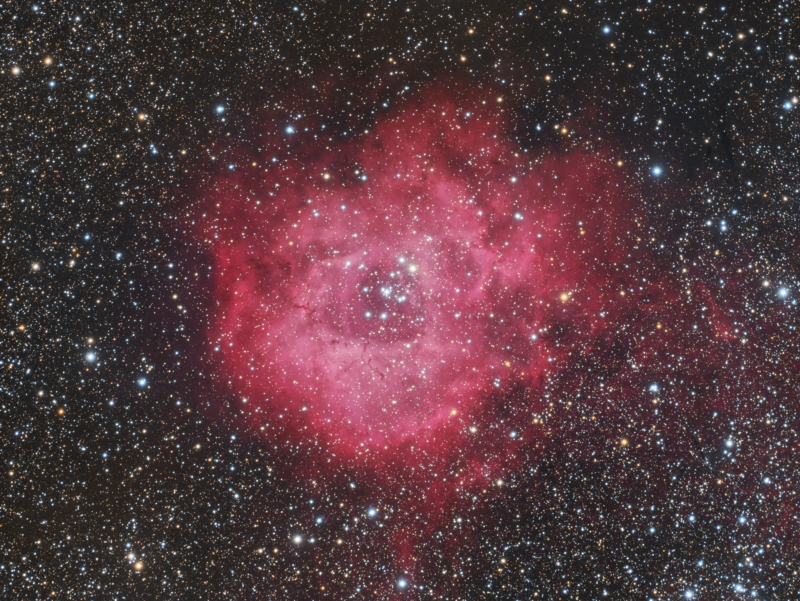The Rosette Nebula (Jon Talbot)
The Rosette Nebula
Alternate:Caldwell 49, Sharpless 2-275, NGC 2237
Monoceros
RA 06h 33 m 45 s
Dec +04º59′ 54”
Magnitude: 9.0
The Rosette Nebula is a large Sharpless catalogued HII region located near one end of a giant molecular cloud in the Monoceros region. With multiple NGC designations, the Rosette qualifies as a Cosmic Duet.
The Rosette has several NGC designations:
-
NGC 2237 – Part of the nebulous region and also for the entire nebula
-
NGC 2238 – Part of the nebulous region
-
NGC 2239 – Part of the nebulous region that was first observed by John Herschel.
-
NGC 2244 – The open cluster within the nebula, discovered by John Flamsteed in 1690.
-
NGC 2246 – Part of the nebulous region
-
NGC 2252 – Part of the nebulous region
The cluster and nebula lie at a distance of some 5,000 light-years distant, and measures roughly 50 light -years in diameter. The illumination of the nebula comes from the ongoing star-formation activity that is occurring in the dense molecular cloud of the region.
The Rosette’s NGC 2244 star cluster can be seen with binoculars or telescopes of apertures up to 4”. The nebula itself is more difficult to spot visually and requires an 8” or greater aperture telescope with a low magnification and UHC filter. Dark skies are a must. The Rosette’s nebulosity is easier to image than to observe visually.
